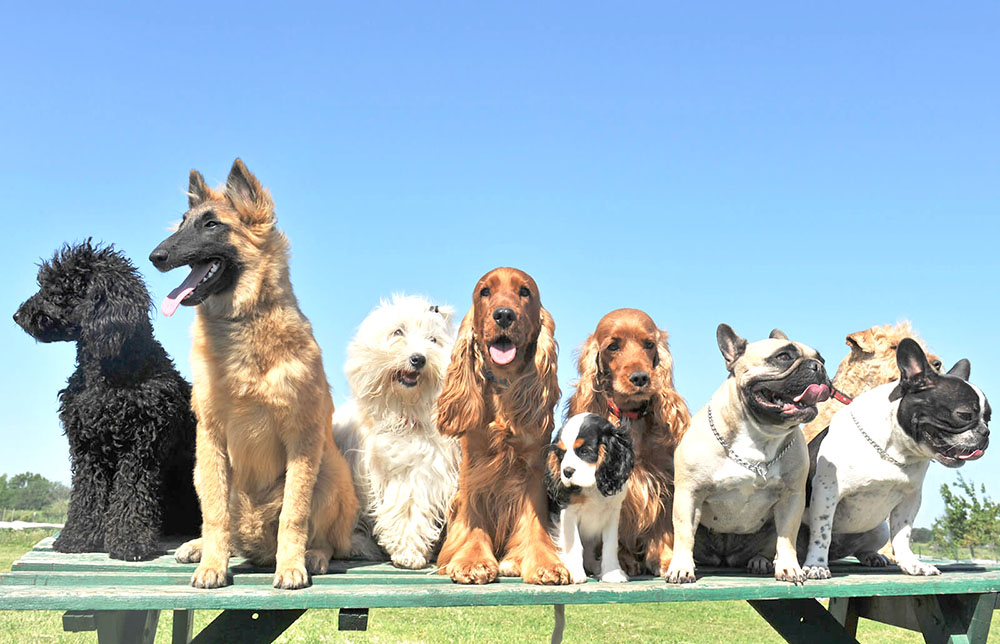Over the previous two weeks, we have been discussing the preparation of the animals for mating, as well as activities immediately prior to the actual mating.
One colleague commented on an omission; it is good to know that my colleagues read this column. It is also always welcome when, from time to time, they offer advice on issues that I should emphasize and support in general. 
The issue that I omitted mentioning is when the mating is to take place between a tall stud dog and a small bitch. Well, that scenario would not present itself in matings that deal with the perpetuation of the same breed (since the male and female of the same breed will more or less be the same size). However, human’s idiosyncrasy dictates that some of us might just want to get puppies from parents of different breeds. In other words, some breeders might want to create new breeds, for example the “Labradoodle”, which is a cross between a Labrador and a Poodle. In this case, assistance may be needed at parturition because an obvious physical problem may present itself. I would suggest that mating of a tall stud dog and a small bitch should, if absolutely necessary, take place on an incline, with the small dog (obviously) on the higher end of the slope.
I must, however, advise against mating dogs whose sizes are too dissimilar, especially if the female is a smaller dog. Her pelvis may not be wide enough to accommodate large puppies after a successful mating, and serious difficulties during the actual birth/delivery period may occur.
Now to the actual
mating exercise
Question: Should the owners help the two animals to copulate?
Answer: Many dogs (especially the young and inexperienced ones) do not know their way about the practicals of this novel sexual excursion too well. The male dog might jump on to the side of the female, and even on her head. In this case, just gently physically gently steer him in the right direction.
Usually, however, the female knows what it is to be done; she would raise her tail and stand still to be mounted. If there is a problem with the bitch, then the attendant may wish to steady her, and from below (with their hands between the hind legs) lift the vulva. One should not manipulate the male dog’s sexual parts (for example, leading the penis to the vulva). It has happened on several occasions that such handling precipitates a premature ejaculation – especially in young, excitable, immature, and hyperactive stud dogs.
I should mention, in passing, that one can actually mate small breeds on a table – steering and holding the two participants together. You may wish to place a cover (a carpet, for example) on the table to reduce slipping and sliding.
Question: What is a tie?
Answer: After intromission, the head of the stud’s penis will swell, thus ensuring the ‘tie’ (The dogs are ‘stuck’ together). This situation will remain for at least 10 minutes and can remain for as much as half an hour.
If the female (or the male for that matter) is whining, please do not intervene. This is not an abnormal condition. Under no circumstances should you panic and try to disassociate the two dogs which are ‘stuck’ together.
If the male turns himself around in such a manner that both dogs’ heads are in two opposite directions, there is no cause for concern – even if the male is puling the female in his direction.
After the ejaculation is completed and the time is up, the dogs will separate. Sometimes, the actual act of separation is associated with a bit of pain. The dogs may snarl or throw a bite your way if you try to intervene. At this point, I would advise that you just leave the dogs alone for a while. If they are leashed, lead them away from each other. You may wish to make a cursory examination of the dogs so as to ascertain whether any major injuries are visible.
Well, I have taken you through the canine sexual adventure. We are on our way to have puppies – in two months time. Our weekly discussions will focus on the pregnancy itself.
Next week, there will be a guest column dealing with the well-being of companion animals.
